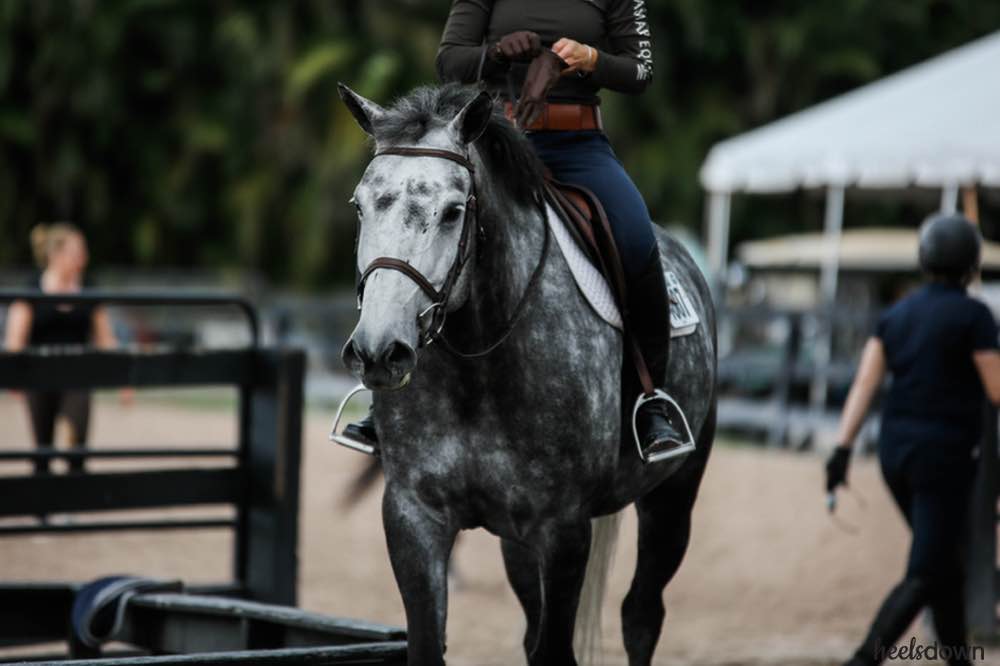The Cool Down

By Sarah Brooks
Rides are usually segmented into three basic sections: warm-up, active schooling, and cool-down. However, most riders, whether intentionally or not, do not conduct a proper cool-down because it’s simply easier to hand this task off to a working student or groom when you’ve got five or more horses to ride, lessons to teach, and personal life obligations to consider.
Cooling down can be so much more than simply walking your horse around on the buckle until he is “back to normal” or dismounting and hosing him off. Certainly some attempt at a cool-down is better than none at all, but there’s a better way to achieve effective recovery than aimlessly walking your horse around for ten minutes while you peruse Instagram on your phone, hoping that he doesn’t spook and put you on the ground. No shame – we’ve all done it!
What does a comprehensive cool-down look like?
The Trot Circle
In the same way that our warm-up increases in intensity to prepare for harder work, the cool-down decreases in intensity from active schooling to resting. It is often easiest to begin cool-down on a 20-meter circle in the working trot. From there, gradually allow the circle to grow larger and the contact to become softer so that the horse is in a “long and low” frame. This is achieved by maintaining bend and balance on the circle while gently leg yielding outward, and by softening your hands and fingers so that the horse is encouraged to reach his head and neck down towards the bit. It should feel as though your horse is tenderly pulling the reins through your fingers, and this is important in stretching his long, delicate muscles which have just been compressed during active schooling.
The Transition
Allow the tempo and rhythm of the trot to gradually slow while ensuring that your horse is still pushing with his hind legs, and once your horse is stretching down comfortably in such a way that you can feel his back “swinging” beneath your seat, ask for a quiet downward walk transition by engaging your seat and back muscles and “melting” into the walk. In other words, your transition should not be abrupt because that would be counterintuitive to what we are trying to achieve with respect to your horse’s muscles.
The Walk Serpentine
Once your horse is walking, continue to allow him to stretch downward and begin a shallow three-loop serpentine. Ensure that you are maintaining proper posture and position, and complete accurate serpentines in both directions. Focus on steering with your seat and leg, which will continue to soften your horse’s muscles as cool-down progresses. When you are satisfied with your serpentines, allow the horse to walk for five to ten more minutes before dismounting and engaging in your normal out-of-saddle cool-down and grooming routine.
As a disclaimer, this cool-down outline can be tweaked to your preferences, but it should provide a fundamental baseline for riders of any discipline who are doing any type of ring work. Keep in mind that cool-down is important to your horse’s health, muscle development and recovery, and most importantly, his happiness. Once you find a good routine for cool-down and begin to see the role it can play in your program, you’ll never skip this important step again!


